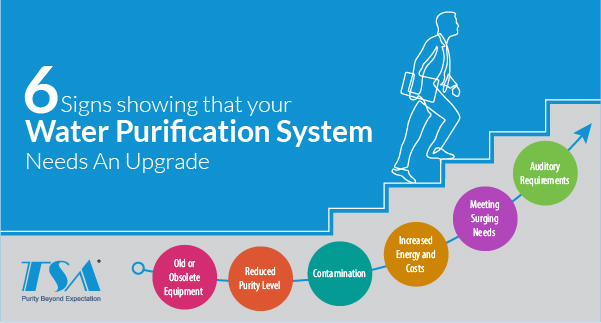The critical importance of clean water is now being felt more than ever before. Management of water resources has today become an indicator of a nation’s socioeconomic and health status. A lot of major strides have been taken on the problem of tackling the availability of clean water. Water purification systems have proved to be a boon for this, but they tend to undergo a lot of wear and tear during the water filtration process. For this, it is always advisable to assess whether or not, the water purification system/plant requires an upgrade. The best way to evaluate this is to look for the indicators mentioned below.
Old or Obsolete Equipment
A water treatment project tends to run for a long period of time, which causes them to undergo corrosion and deterioration. Also, with the constant inventions in water purification systems, the technology in use currently may no longer be cost-efficient. At such times, it is best to evaluate the state of the current water system and upgrade or replace it, if needed. Doing so will not only reduce running and maintenance costs but also improve process outcomes.
Reduced Purity Level
If you observe that the level of water purity of your plant has considerably dropped below the threshold or is showing signs of inconstant performance, it is time to upgrade your water treatment system. A single incident of this nature may not require your attention, but frequent mechanical issues may indicate that an upgrade is inevitable. An upgrade at such a stage will also prove to be more cost-effective than constant repairs.
Contamination
If your water treatment system shows recurrent instances of bacterial contamination, it may be time for the facility to be upgraded. Contamination in the treatment plant may happen mainly due to pump faults, defective filter membranes, an insufficient flow of water or inaccurate water temperatures. Testing and decontamination may be time-consuming and may require the whole facility to be shut down for repairs. If such contaminations happen at regular intervals, it is best to look to upgrade the water purification system.
Increased Energy and Costs
While water treatment systems are helping significantly in reducing water pollution, we need to make sure that they don’t cause air pollution. Water purification systems use 2.5 – 3% of the total global electricity consumption for the treatment of wastewater. To avoid higher energy consumption levels, it is important that we switch to more energy-efficient methods to achieve higher purity and efficiency from our water treatment system.
Meeting Surging Needs
There are many water treatment plants experiencing difficulties in catering to the needs of the ever-increasing population. The best solution for this is a plant expansion, but this may not always be possible due to the scarcity of land available for construction. The second-best solution is a plant upgrade, moving to more energy-efficient methods to reduce the carbon footprint and provide more output while being an energy-saving facility.
Auditory Requirements
The water treatment, particularly in the high purity segment, has come a long way in the last decade. The audits are becoming stringent. If the plant is not complying with the auditor’s audit requirements, it is in need of an upgrade.
Pure water is indispensable for our survival. We do have water treatment plants to our rescue for the same, but we have to make sure these undergo regular maintenance to deliver optimum benefits. A water treatment system that is well designed and maintained regularly will outperform its peers and become an indispensable asset to your manufacturing unit. TSA water system designs and installs high purity water treatment units that are manufactured with the highest quality parts. We design water systems to provide for your needs and help you reach the optimal purity for your water system.







